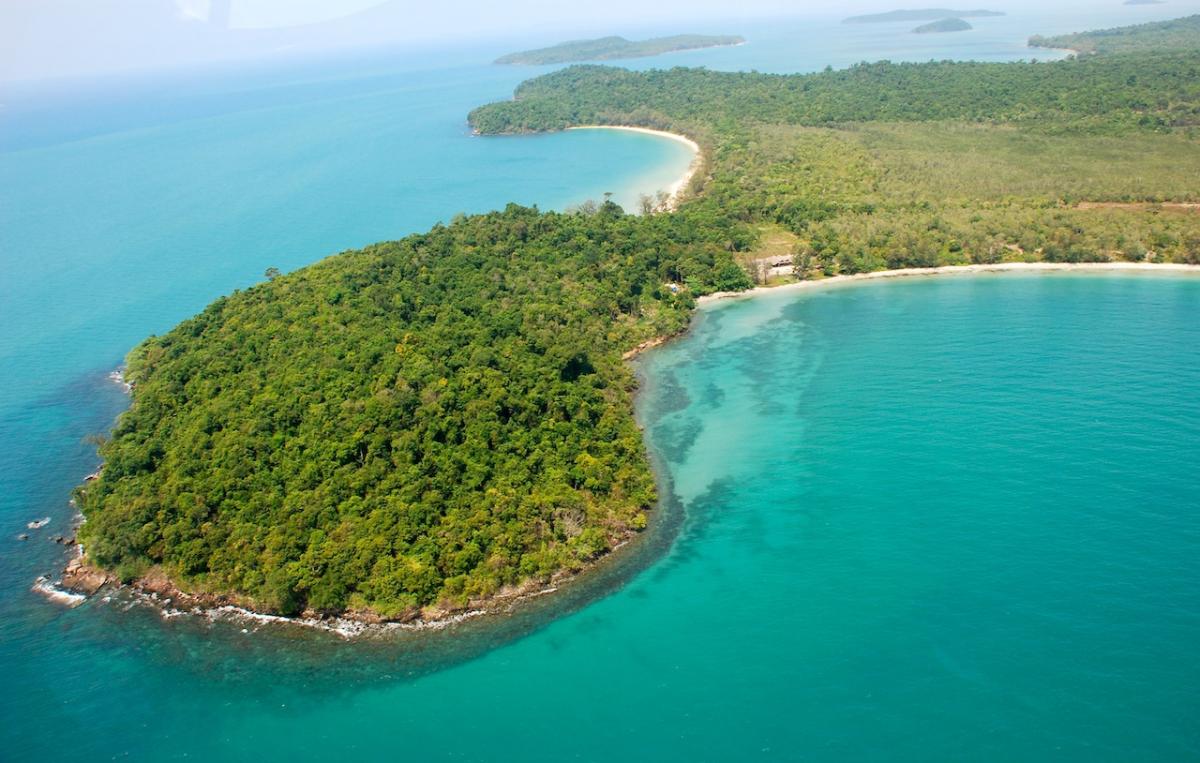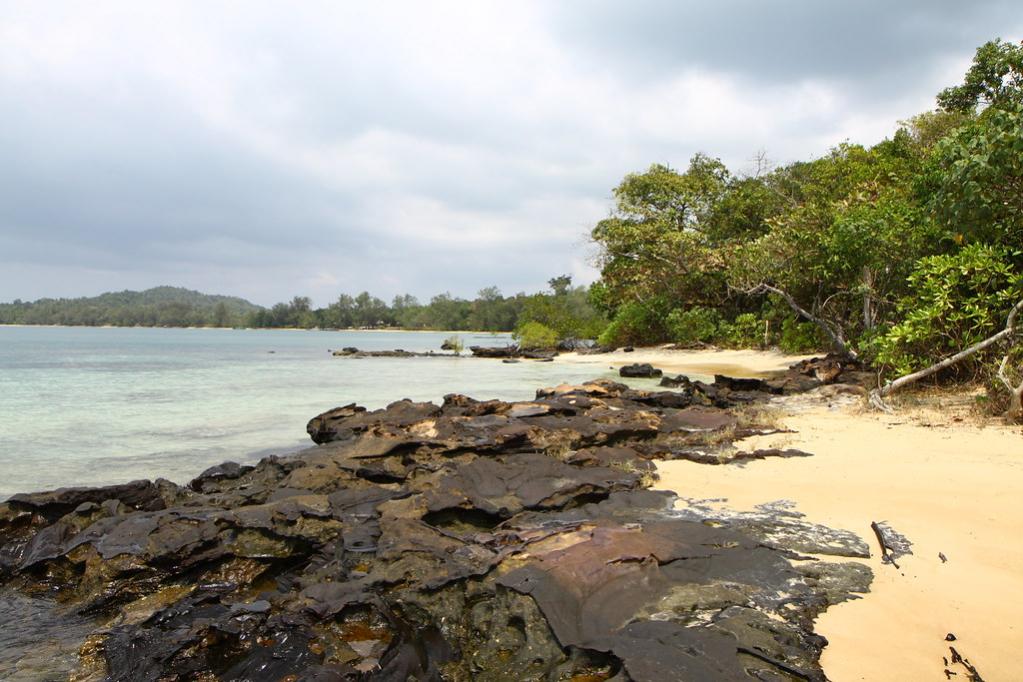XU7RRC Team will be active from Koh Ta Kiev Island, IOTA AS - 133, Cambodia, 25 November - 3 December 2025.
Team - Members of the Russian Robinson Club and Miller DX Club.
Recent DX Spots XU7RRC
XU7RRC Log search They will operate on HF Bands.
QSL via RZ3EC.
Cambodia: a country lost in the jungle
Cambodia is a country in Southeast Asia, located between Thailand and Vietnam. The country was formerly known as Kampuchea. Due to its long isolation, the country has managed to preserve its color and identity.
DXing radio equipment
Although the country is not a popular destination, travelers from all over the world come here to learn more about Khmer civilization and visit ancient palaces and temples that have been lost for centuries in the impenetrable jungle. The history of Cambodia is full of bloody events, unsolved mysteries, and enigmas. Back in the 1970s, the Khmer Rouge were in power, and the majority of the local population still lived below the poverty line. At the same time, Cambodia's economy is developing rapidly compared to other countries in Southeast Asia.
The country has a tropical climate with humidity ranging from 90 to 100% and temperatures ranging from +26 to +35 degrees Celsius, sometimes slightly higher. The weather in Cambodia can be divided into two seasons: the rainy season (May to October) and the dry season (November to April). Minefields pose a danger to tourists traveling independently.
 Koh Ta Kiev Island, Cambodia.
Koh Ta Kiev Island, Cambodia.
Getting to know Cambodia
A trip around the country usually begins with a visit to the bustling and distinctive capital, Phnom Penh, which allows you to truly experience the Asian flavor. The city is built at the confluence of two full-flowing rivers—the Mekong and the large Tonle Sap. The capital Phnom Penh was severely damaged during the war but is gradually being restored. In the Genocide Museum, you can learn about the terrible regime of Pol Pot and the Khmer Rouge. The Khmer Rouge regime, which came to power in 1975, is considered the bloodiest in the history of the kingdom. The focus on establishing “agrarian socialism” led to genocide: during those years, between 1 and 3 million local residents (approximately 20 percent of the population) were killed.
Today, the streets of the city are filled with provincial tranquility. Here you can see French colonial mansions and modern skyscrapers, as well as ancient Khmer buildings in the old district on the riverbank. The Royal Palace, the Silver Pagoda, and the National Museum are open to tourists.
Resort vacation
Beach lovers can relax on the vast coastline of Cambodia. Surprisingly, you can still find completely deserted beaches with white sand and palm trees here. However, swimming in the Gulf of Siam is only allowed in designated areas. Sihanoukville, a small province in the south of the country, is well worth a visit. This resort attracts visitors with its clean sandy beaches and numerous tropical islands. It was founded in the 1960s as a port, but over time it has become a tourist attraction. After swimming in the sea, you can visit Wat Leu Temple — the Upper Pagoda, take a trip to Ream National Park, and see the picturesque Kbal Chey Waterfall.
Tourists can expect unforgettable experiences: boat trips on the largest lake in Asia, bamboo train rides, visits to crocodile farms, watching freshwater dolphins near Kratie, exciting diving in the coastal waters near the islands, and helicopter tours to distant temples. You can bring back unique souvenirs from your trip — items made from wild silk. Skilled craftsmen make original clothing items and scarves. You can also purchase beautiful silver items, various figurines, and paintings.
 Koh Ta Kiev Island, Cambodia. Author - Todd Firman.
Koh Ta Kiev Island, Cambodia. Author - Todd Firman.
Floating villages on Tonle Sap Lake
Tonle Sap Lake in Siem Reap is the largest body of water in Indochina. It is a true wonder of nature. Its name translates from Khmer as “big fresh water,” but a simplified version is more common — “big freshwater lake.” . And in fact, the water in it is murky with silt. It is no coincidence that Tonle Sap Lake is also called the inland sea of Cambodia — there are many unique floating villages here with their own schools, shops, police stations, and even temples on pontoons. There are several settlements, and each of them is different from the other.
The largest village, home to more than 5,000 people, is a popular tourist destination. Every day, children go to school by boat, locals grow gardens and farms on rafts on the water, and fish. Some merchants travel between houses by boat, offering their goods. Television and fresh water have been brought to the villages, but life here is still not easy. Businessmen in Cambodia make money from orphaned children by offering tourists to buy rice, food, and stationery for them. However, after the purchase, all the items are returned to the store.
The villages are considered floating, not just aquatic, due to changes in the size and depth of the lake depending on the season. During the rainy season, the Tonle Sap River, which flows out of the lake, changes its direction, leading to an increase in water volume. The lake's area increases fivefold, and its depth reaches 9 meters. During the dry season, the water level drops to 1 meter, and the settlements become ordinary. The checkpoint to the village is built on a tree, and the main temple stands on the highest point and is never flooded.
It is believed that floating villages appeared in the middle of the last century when hostilities began in neighboring Vietnam. Refugees were not allowed by law to settle on the land of Cambodia, but the legislation did not mention the water surface. Therefore, they began to build houses on stilts and settled on Tonle Sap Lake.
Visiting floating villages gives you the opportunity to get acquainted with the life and culture of ordinary people living in Cambodia.
 Koh Ta Kiev Island, Cambodia. Author - Floriane Romain.
Koh Ta Kiev Island, Cambodia. Author - Floriane Romain.
Traces of Khmer civilization
Angkor is the ancient capital and main attraction of Cambodia, a place of pilgrimage for hundreds of thousands of tourists. The ancient city was built over 400 years in the 10th-13th centuries, during the heyday of the Khmer Empire. From here, the kings ruled over all the territory that belonged to them, stretching from Vietnam in the east to the Bay of Bengal in the west and to the northern part of Laos. There were many Hindu and Buddhist temples here, which have survived to this day.
The Angkor Wat temple complex, dedicated to the Hindu god Vishnu, is one of the wonders of the world and is recognized as the largest in the world. It is a cult architectural masterpiece and the largest structure built by humankind, left as a legacy by the Khmer king Suryavarman II. Its area is three times larger than that of the Vatican. The complex was built over a period of 30 years, from 1113 to 1150 AD. After the king's death, the temple became a tomb-mausoleum. Visitors have a unique opportunity to travel back thousands of years and touch the mysterious history of the Khmer civilization.
Angkor Wat looks majestic today, but until the mid-19th century, it was forgotten. The monumental buildings were covered with impenetrable jungle, and during the war, Red Khmer guerrilla units hid there. When they left the ancient city, they mined the entire area. The unique structures of Khmer civilization also became the main location during the filming of the movie Lara Croft: Tomb Raider.

